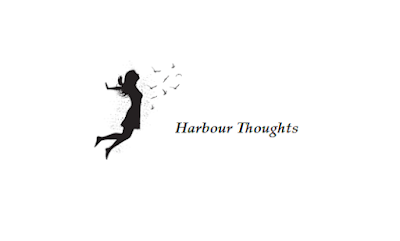Song
By Duncan Campbell Scott
Here’s the last rose,
And the end of June,
With the tulips gone
And the lilacs strewn;
A light wind blows
From the golden west,
The bird is charmed
To her secret nest:
Here’s the last rose —
In the violet sky
A great star shines,
The gnats are drawn
To the purple pines;
On the magic lawn
A shadow flows
From the summer moon:
Here’s the last rose,
And the end of the tune.
Poem Analysis:
Duncan Campbell Scott’s “Song” is a short, lyrical meditation on the passage of time, the beauty of nature, and the quiet melancholy of endings. Known for his finely crafted poems rooted in the Canadian landscape and imbued with emotional subtlety, Scott here offers a delicate and resonant reflection on the close of a season — and, symbolically, on the transience of all beautiful things.
Overview and Structure
The poem is composed in free verse with light rhyming, flowing in a natural, almost musical rhythm that reflects its title — “Song.” Its tone is wistful and tranquil, evoking a deep sense of seasonal transition, particularly from the lush fullness of late spring into the early decline of summer.
Refrains like “Here’s the last rose” and “And the end of the tune” act as both literal markers (the end of June, the final rose of the garden) and emotional signposts — indicators that something cherished is slipping away.
1. Transience and the Passage of Time
“Here’s the last rose, / And the end of June…”
These opening lines immediately situate the reader in a moment of seasonal conclusion. The “last rose” becomes a powerful symbol — not just the final flower of the garden, but an emblem of fading beauty and time passing.
Scott’s use of early summer as a setting is significant: June often represents the height of life and bloom, and its end signals a subtle turning point toward decline, echoing themes of impermanence and ephemeral joy.
“With the tulips gone / And the lilacs strewn;”
Here, the poet catalogs what has already passed — tulips, lilacs — building a quiet sense of loss. These lines are not tragic, but they carry a bittersweet air: beauty has bloomed and now it’s scattered, like petals on the wind.
2. Nature’s Quiet Harmony
“A light wind blows / From the golden west, / The bird is charmed / To her secret nest:”
Scott’s language here is gentle, sensory, and painterly. The “light wind,” the “golden west,” and the “secret nest” all evoke a peaceful, idyllic setting. Nature continues its rhythm undisturbed by human drama — there’s no angst, only quiet continuity.
The bird being “charmed” to her nest adds a note of enchantment, suggesting that the natural world operates by a deeper, mysterious rhythm. The poem doesn’t fight against the ending it describes — it accepts it with reverence.
3. Light, Shadow, and Celestial Imagery
“In the violet sky / A great star shines,”
As day turns to evening and summer to its latter stages, Scott introduces cosmic imagery — the “great star” shining in the violet sky. This expands the scope of the poem, connecting the small, fading rose to the vastness of the universe. The transience of life and nature is placed in contrast with the eternal — stars, moonlight, the cycle of shadows.
“On the magic lawn / A shadow flows / From the summer moon:”
This is one of the most evocative lines in the poem. The phrase “magic lawn” enhances the mystical tone, and the image of a flowing shadow suggests that time itself is a soft, intangible presence, moving through space without violence. The moon, often a symbol of change and reflection, completes the atmosphere of gentle farewell.
4. Finality and Music
“And the end of the tune.”
The last line, echoing the poem’s title, emphasizes that not only is the visual beauty of the season fading, but so is its music — the “tune” of June, of birdsong, of living bloom. This musical metaphor strengthens the poem’s elegiac tone — it’s a kind of lullaby for summer’s end.
Importantly, there’s no despair here — just the quiet recognition that everything beautiful must conclude, and that we must treasure the final notes.
Literary Devices
- Repetition: “Here’s the last rose” serves as both thematic anchor and rhythmic refrain, drawing the reader back to the central image of fragile final beauty.
- Alliteration and Assonance: Phrases like “magic lawn / A shadow flows” use soft consonants and vowel sounds to enhance the poem’s lyrical quality.
- Imagery: Scott's imagery is rich and precise, particularly in his descriptions of light, sky, and scent. His use of color — “violet sky,” “purple pines,” “golden west” — paints a vivid emotional landscape.
- Symbolism: The rose, moon, star, and wind all serve as symbols of beauty, time, and transition.
A Meditation on Beauty and Impermanence
Duncan Campbell Scott’s “Song” is a gentle elegy to a moment in time — the end of June, the last rose, the waning tune of nature’s orchestra. It captures a universal human experience: the melancholy of endings, even beautiful ones.
Rather than resist change, the poem invites readers to observe, feel, and honor the passage of time with grace. It offers no grand philosophy, only a soft-spoken truth: beauty fades, seasons turn, but there is peace in witnessing the final bloom.
In just a few stanzas, Scott achieves what the best lyric poems do — he distills emotion through nature, inviting us to pause, listen, and feel the music of a world forever in motion.
